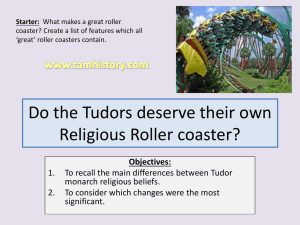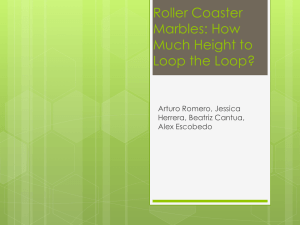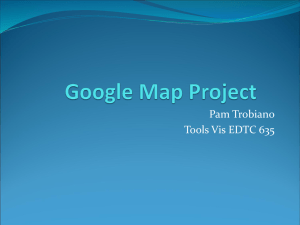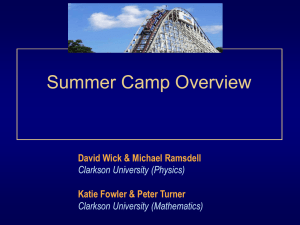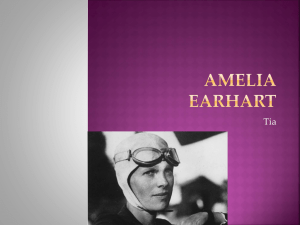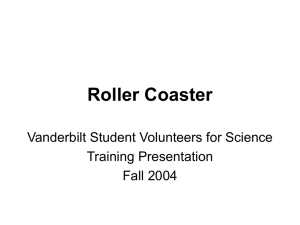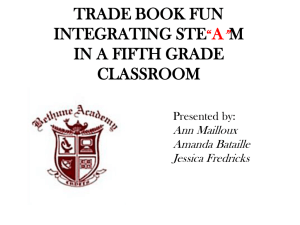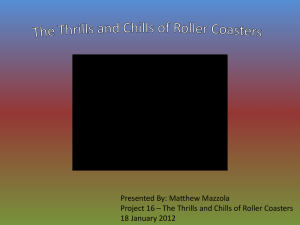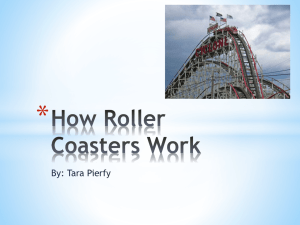Roller Coaster Project
advertisement
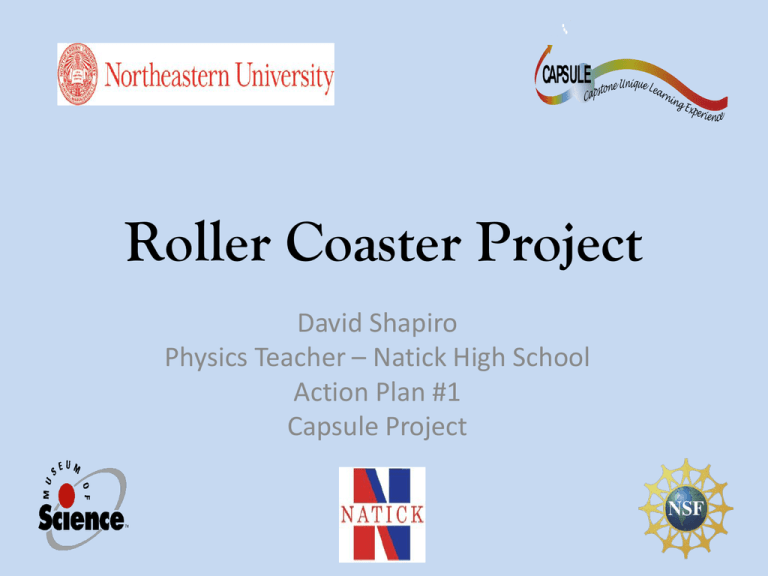
CAPSULE Unique Lea stone rni Cap ng Roller Coaster Project David Shapiro Physics Teacher – Natick High School Action Plan #1 Capsule Project Exp erience Action Plans Action Plan #1 – Roller Coaster Design Project Ninth grade college prep students will design and fabricate a roller coaster. The project will be completed before they take their midterm exam. Action Plan #2 – Generating Electricity Physics for engineers students (senior elective) will design and fabricate a device that generates electricity using a sustainable energy source. The generator will then be used to power another device during a power outage. Action Plans Action Plan #1 – Rollercoaster Design Project Ninth grade college prep students will design and fabricate a roller coaster. The project will be completed before they take their midterm exam. COMPLETED Action Plan #2 – Generating Electricity Physics for engineers students (senior elective) will design and fabricate a device that generates electricity using a sustainable energy source. The generator will then be used to power another device during a power outage. MARCH 2012 Original Plan During the project students will • Design a Roller Coaster to meet a variety of constraints. • Create a Roller Coaster using K’NEX. • Perform a variety of calculations on the Roller Coaster (potential energy, kinetic energy, velocity …). • Present their Roller Coaster to the class. Original Timeline Timeline – 1.5 to 2 weeks in January 1. Introduction to the project and distribute project documents. 2. Design the Roller Coaster with specific constraints. (1 – 2 days) 3. Create the Roller Coaster with K’NEX. (2 days) 4. Complete tests and calculations on the Roller Coaster. (2 days) 5. Presentation (1 day) Initial Hurdles • TIME • Creating a common project for all physics 11 classes. • TIME • Preparing students for their midterm. • And TIME Implementation • Each physics 11 class built their own roller coaster. • Roller coasters were built in one period (78 minutes). • Students were placed in groups of four and each group had a specific part of the roller coaster to build. • Students received a power point describing the project and each part of the roller coaster that needed to be built. • 12 roller coasters were created. Student PowerPoint Example: Goal • Your goal – Design a roller coaster out of K’NEX with two hills and a straight away. – Communication: each group will build a specific part of the rollercoaster. – Perform velocity, acceleration, force, energy, work and momentum calculations on the roller coaster. – Create a PowerPoint presentation regarding one of the physics concepts above. – The most efficient roller coaster will receive bonus points. Student Power Point Example A – The first Hill Design the highest point of the rollercoaster. The picture below will help you. Collaboration Roller Coaster Roller Coaster Finished Product During the Building • Students had to communicate with each other. • Some classes ran out of pieces as they wanted to build the tallest coaster. • Each class had to design an aspect of the coaster for it to work. Measurements • After the roller coasters were built each group was assigned a specific roller coaster to analyze. • Students measured gravitational potential energy, kinetic energy, acceleration down the first hill, change in position, friction along the flat and momentum conservation at the bottom. • Students could use any of the equipment in the room including video analysis to make these measurements. Measurement Pictures Video Analysis Presentation? • Students handed in their roller coaster project packet with their calculations. • We ran out of time to present our findings in order to spend a day reviewing for the students’ midterm. • Couldn’t present the findings after the midterm because of our tight schedule with the physics MCAS. Challenges • Getting all of the physics teachers on board with the project. • Space for the roller coasters. • Unique ideas in each section. Students wanted to copy other designs. • Wrapping up the project. Lack of presentation. • TIME Reflection • A majority of the students were engaged. • Each class had unique ideas regarding how to make the roller coaster. • Students were introduced to the engineering process. • Positive feedback from the students. • Positive feedback from the physics teachers. • Increase in midterm scores? • More open ended in the future with the presentation piece.
